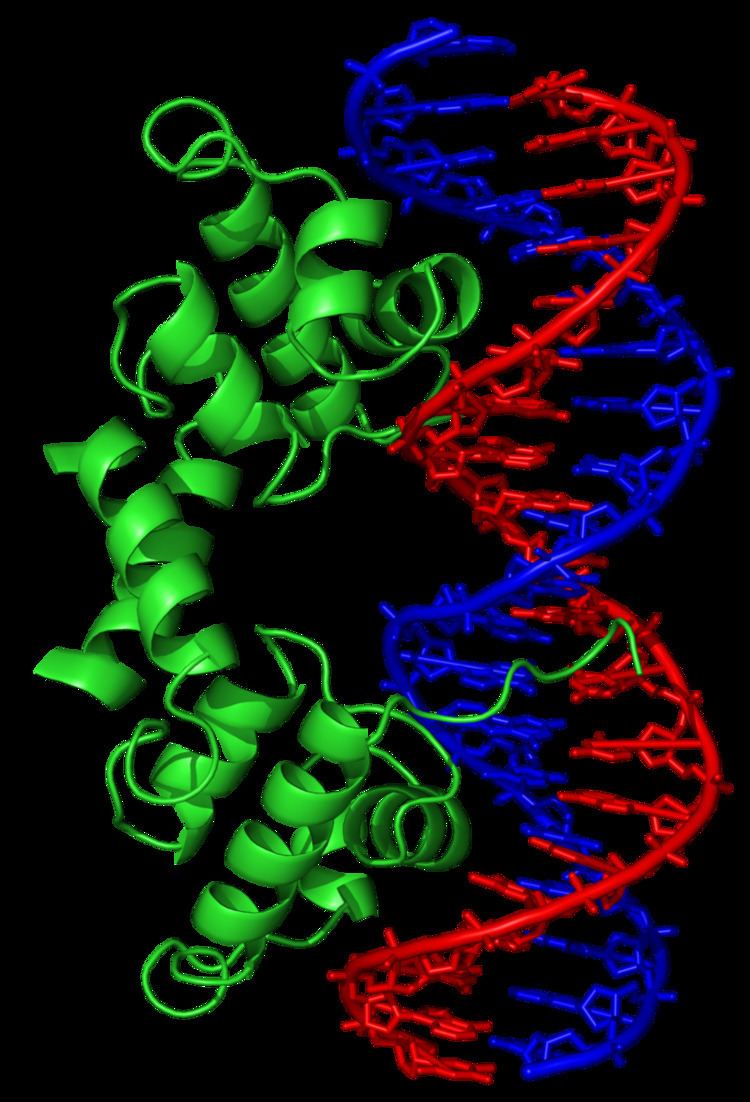 | ||
Protein–DNA interactions are when a protein binds a molecule of DNA, often to regulate the biological function of DNA, usually the expression of a gene. Among the proteins that bind to DNA are transcription factors that activate or repress gene expression by binding to DNA motifs and histones that form part of the structure of DNA and bind to it less specifically. Also proteins that repair DNA such as uracil-DNA glycosylase interact closely with it.
Contents
In general, proteins bind to DNA in the major groove; however, there are exceptions. Protein–DNA interaction are of mainly two types, either specific interaction, or non-specific interaction.
Design
Designing DNA-binding proteins that have a specified DNA-binding site has been an important goal for biotechnology. Zinc finger proteins have been designed to bind to specific DNA sequences and this is the basis of zinc finger nucleases. Recently transcription activator-like effector nucleases (TALENs) have been created which are based on natural proteins secreted by Xanthomonas bacteria via their type III secretion system when they infect various plant species.
Detection methods
There are many in vitro and in vivo techniques which are useful in detecting DNA-Protein Interactions. The following lists some methods currently in use:
Manipulating the interactions
The protein–DNA interactions can be modulated using stimuli like temperature,pH and electric field. This can lead to reversible dissociation/association of the protein–DNA complex.
